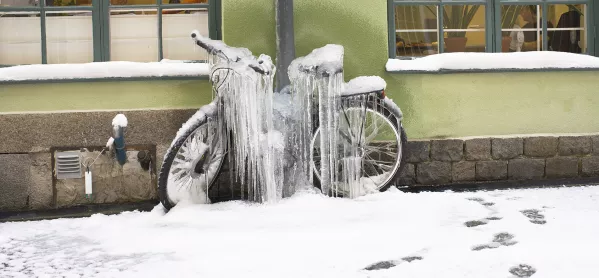How cold can your classroom get - legally?

How cold can a classroom be? With temperatures plummeting across the country, it’s a question many teachers and pupils may be wondering.
Well, legally speaking, there is no minimum temperature requirement for classrooms specifically - or indeed any workspace.
However, the Health and Safety Executive Approved Code of Practice on the Workplace (Health, Safety and Welfare) Regulations suggests the minimum temperature for working indoors should normally be at least 16C, or 13C if much of the work involves rigorous physical effort.
Some argue this is too low for schools though, with the NEU teaching union saying it believes 18C is a more realistic minimum temperature in which to teach and learn.
The union also advises teachers to refer to the Health and Safety at Work etc Act 1974, which places a statutory duty upon employees to take reasonable care for the health and safety of themselves and others, as grounding for taking action if they feel working conditions are not safe.
The NEU says: “This duty may require teachers to withdraw themselves and their pupils from situations in which the physical conditions may affect the health and safety of themselves and their pupils.”
It is worth noting that in Wales different rules apply and a minimum of 18C is required in classrooms where there is a “normal level of physical activity associated with teaching, private study, or examinations”.
For areas with higher than normal physical activity (for example during PE), a temperature of 15C should be maintained, while in areas with lower than normal levels of physical activity (for example a sick room), a temperature of 21C should be maintained.
What happens when the body gets cold?
Extreme cold for too long is dangerous to the body, as Shane Maloney, a professor of anatomy, physiology and human biology at the University of Western Australia explains.
“Humans are homeothermic animals, which means our physiological systems act to maintain a core body temperature of about 37C,” he says.
“We continually make heat as a by-product of our metabolism, and to keep body temperature constant we need to lose that heat, which we do mostly from our skin to the air surrounding us by convection.”
In colder environments, though, heat loss to the environment increases, particularly if air temperature falls and wind speed increases.
“Both of those increase the rate of heat loss by convection and cold rooms increase heat loss by radiation, so cold air puts us at risk of developing hypothermia - a low core body temperature,” Maloney says.
What’s more, while this is a risk for teachers and older pupils alike, Andrea Fuller, a professor in physiology at the University of the Witwatersrand, explains that because the area of skin across which people exchange heat with the environment is larger relative to body mass, small children lose heat “more rapidly and ‘feel the cold’ more than do teenagers or adults”.
As such, primary schools especially need to be aware of minimum temperatures and ensure they act accordingly.
Pile on the clothes
Of course, one simple solution to this is to put the heating up high. But with many old schools full of draughty classrooms and energy bills still high, this is not always viable.
One good idea is to ensure you wear thicker clothing and, most importantly, layer these with multiple garments.
“It’s important to keep narrow body parts well insulated, because they lose heat fast,” explains Duncan Mitchell, emeritus professor of physiology at the University of the Witwatersrand.
He notes, though, that this only goes so far as exposed areas like the face, hands and feet, which cannot be easily insulated, especially in a classroom.
“One likely response in children is increased fidgeting, both as a way to distract themselves from the cold but also as a means to maintain movement and dexterity in cold extremities, like the hands and feet,” he says.
As such teachers, should be aware that a more restless than usual class may simply be the result of trying to keep warm.
Chris Parr is a freelance journalist
You need a Tes subscription to read this article
Subscribe now to read this article and get other subscriber-only content:
- Unlimited access to all Tes magazine content
- Exclusive subscriber-only stories
- Award-winning email newsletters
Already a subscriber? Log in
You need a subscription to read this article
Subscribe now to read this article and get other subscriber-only content, including:
- Unlimited access to all Tes magazine content
- Exclusive subscriber-only stories
- Award-winning email newsletters
topics in this article



